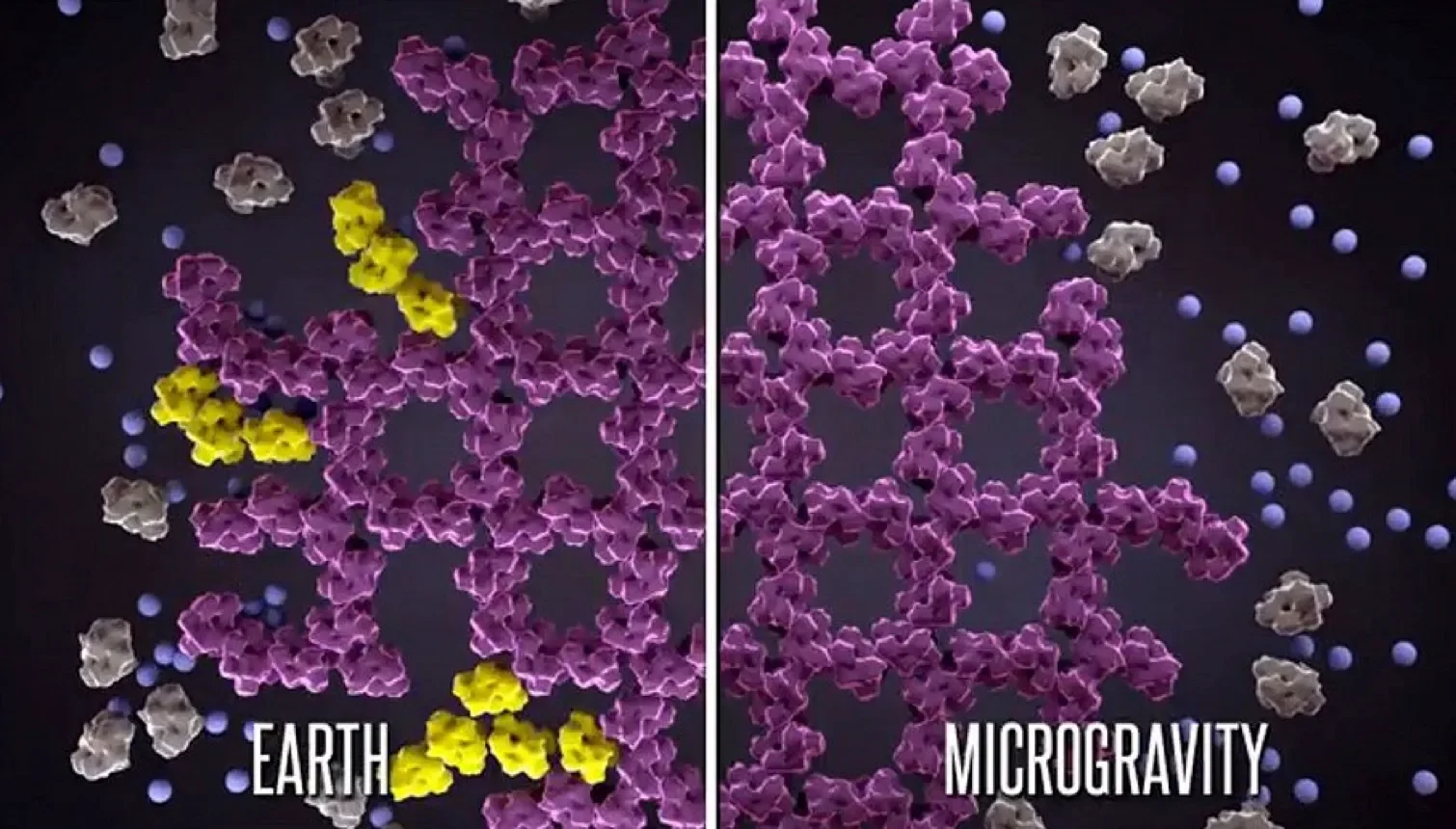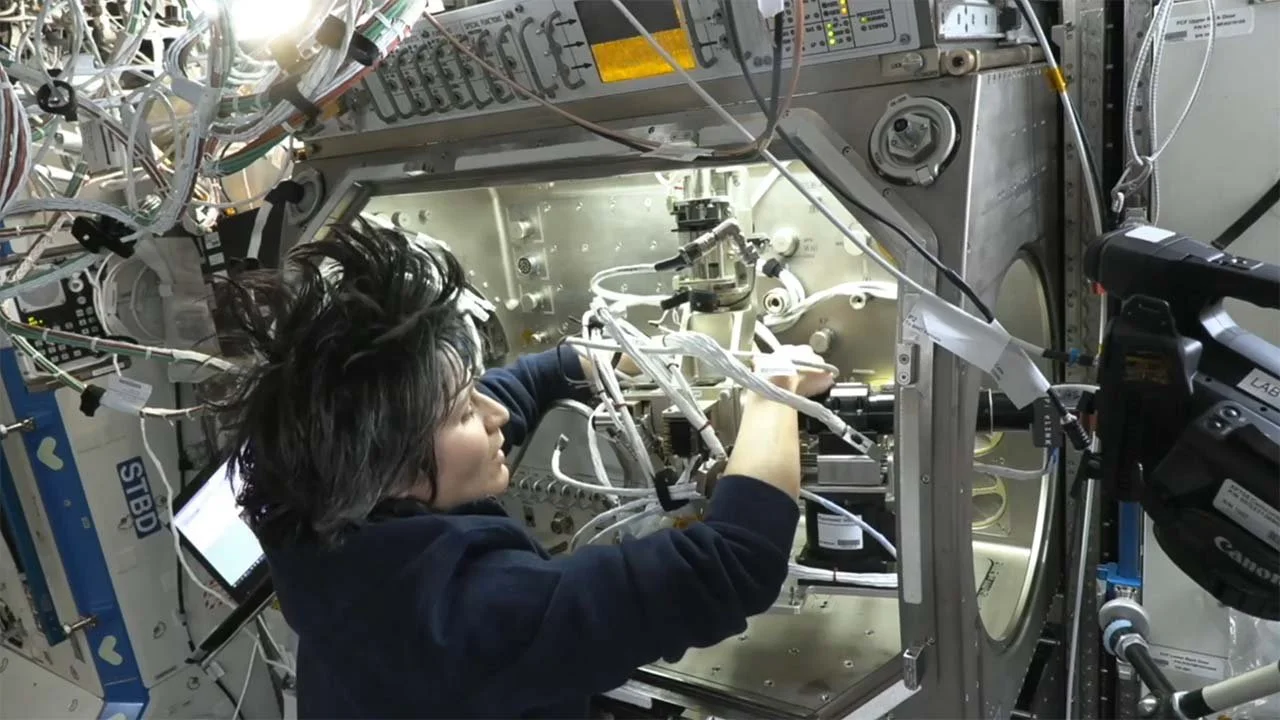Advanced Space Stations as Zero-G Pharma Labs
Crystal molecules align more perfectly on the surface of the crystal in microgravity, thus improving pharmaceutical research outcomes.
Credit: NASA
R&D, bioprocessing, and pre-production as a station service
Microgravity changes biology: crystallisation, assembly, and transport phenomena behave differently, yielding insights and formulations hard to obtain on Earth. Advanced labs on space stations can turn this into a service—bookable lab time, controlled environments, and trained crew support—so pharma and biotech teams iterate faster.
The core assets are GMP-inspired procedures, contamination control, validated instruments, and predictable downlink/return logistics. Providers that treat station time like cloud compute—metered, instrumented, and supported—become indispensable R&D partners.
ESA astronaut Samantha Cristoforetti working on the “Microgravity Science Glovebox” on the ISS. This research in microgravity could potentially end protein clumping and pave the way for protein-based therapeutics to treat and prevent conditions such as cancer and HIV.
Credit: NASA/ESA
Commercial takeaways
Station providers are presenting lab time as a predictable R&D service—rack-level access, validated instruments and scheduled sample return—mirroring familiar CRO engagements. Interest is strongest among pharma discovery teams, scale-up biotech and research organisations that value GMP-inspired process control. Commercial structures mirror drug pipelines with staged work from exploration to pre-production. Partnerships with CROs and foundations are expanding reach. Confidence is reinforced by blinded comparisons with Earth-based results, IP-secure frameworks and template protocols that translate zero-g findings into terrestrial manufacturing steps.
Turn microgravity into a repeatable input to drug discovery pipelines—not a one-off experiment.

